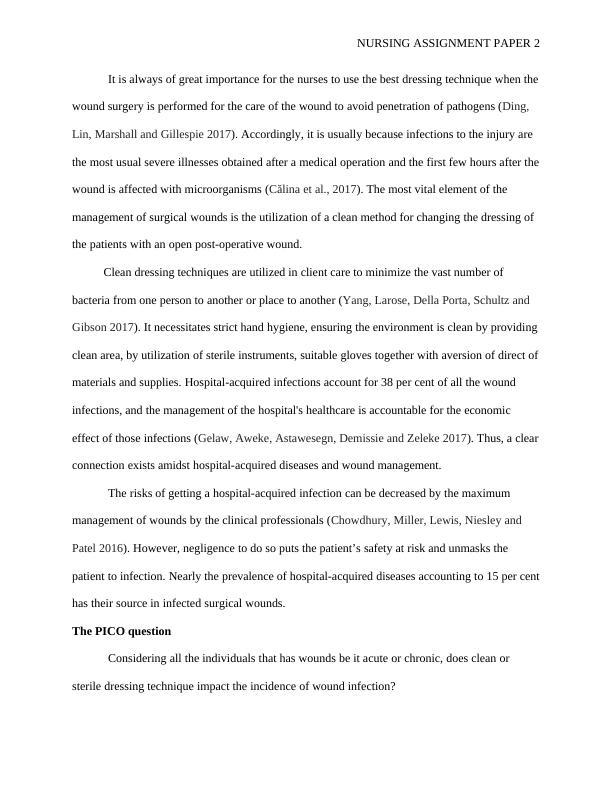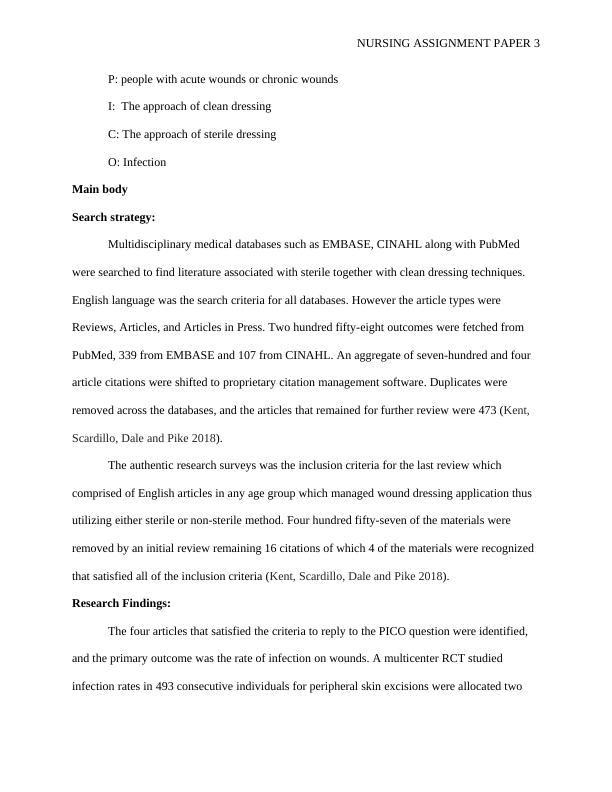The Impact of Clean and Sterile Dressing Techniques on Wound Infection Incidence
Select a clinical scenario and answer the question that follows regarding wound care, delivery methods for medication, or nursing approaches.
10 Pages1883 Words27 Views
Added on 2022-12-26
About This Document
This nursing assignment paper discusses the impact of clean and sterile dressing techniques on the incidence of wound infection. The study concludes that clean dressing is a safe and effective intervention for post-operative wounds.
The Impact of Clean and Sterile Dressing Techniques on Wound Infection Incidence
Select a clinical scenario and answer the question that follows regarding wound care, delivery methods for medication, or nursing approaches.
Added on 2022-12-26
ShareRelated Documents
End of preview
Want to access all the pages? Upload your documents or become a member.
Wound Management | Nursing Assignment
|12
|1829
|21
Wound Care: Evaluating the Safety of Clean Dressing Technique for Surgical Wounds
|10
|1439
|35
Clinical Placement of Nursing Care
|9
|1890
|92
Pilot Study on New Wound Dressing Technique
|20
|4940
|60
Hand hygiene and healthcare-associated infections: A critical analysis of literature
|13
|2629
|471
Hospital Staffing and Health Care–Associated Infections: A Systematic Review of the Literature
|10
|8786
|72



